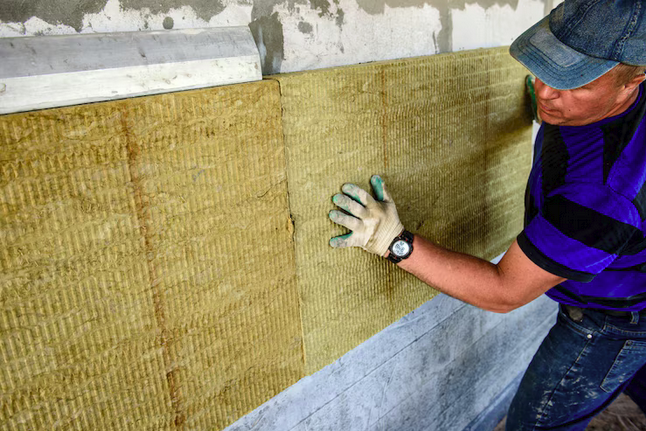In the quest to enhance home comfort and energy efficiency, wall insulation plays a crucial role. It serves as a barrier against external temperatures, reducing heat loss during colder months and keeping cool air inside during warmer periods. As energy costs continue to rise and environmental concerns become more pressing, optimizing home insulation has never been more important. Proper wall insulation not only contributes to a more comfortable living environment but also leads to significant savings on energy bills and a reduced carbon footprint.
Understanding Wall Insulation
Wall insulation involves the installation of materials within the walls of a building to improve thermal efficiency. The primary goal is to prevent the transfer of heat through the walls, which helps in maintaining a consistent indoor temperature. This process is essential for creating a comfortable living space, as walls can be a significant source of heat loss or gain. The effectiveness of wall insulation depends on several factors, including the type of insulation material used, the thickness of the insulation, and the method of installation.
Types of Wall Insulation
Various types of insulation materials can be used to insulate walls, each with its own set of benefits and applications. Traditional options include fiberglass batt, foam board, and cellulose. Fiberglass batt insulation consists of dense mats of fiberglass that are placed between wall studs, providing a good balance of thermal resistance and cost-effectiveness. Foam board insulation, typically made from polystyrene or polyisocyanurate, offers higher R-values per inch of thickness and is often used in areas where space is limited. Cellulose insulation, made from recycled paper products, is blown into wall cavities and offers excellent thermal performance as well as an environmentally friendly option.
Modern advancements have introduced additional materials such as spray foam insulation and reflective or radiant barriers. Spray foam insulation expands upon application, filling gaps and cracks to provide an airtight seal. This type of insulation not only enhances thermal resistance but also improves air sealing and soundproofing. Reflective barriers, often used in conjunction with other insulation types, reflect radiant heat away from the home, contributing to improved energy efficiency.
Benefits of Wall Insulation
The benefits of wall insulation extend beyond mere temperature regulation. One of the most significant advantages is the reduction in energy consumption. By minimizing heat transfer, well-insulated walls reduce the need for heating and cooling, leading to lower energy bills. This energy efficiency also translates to environmental benefits, as reduced energy consumption results in a smaller carbon footprint.
Improved comfort is another key benefit of wall insulation. Insulated walls help maintain a consistent indoor temperature, reducing drafts and cold spots. This creates a more pleasant living environment, particularly in areas with extreme weather conditions. Additionally, insulation can contribute to better indoor air quality by reducing the infiltration of outdoor pollutants and allergens.
Installation Considerations
Proper installation is crucial to achieving the full benefits of wall insulation. The effectiveness of insulation depends on factors such as the thickness of the material, the quality of the installation, and the presence of any gaps or voids. Professional installation is often recommended to ensure that the insulation is applied correctly and meets building codes and standards.
In existing homes, wall insulation can be installed through various methods, including retrofitting or adding insulation to wall cavities. Retrofitting involves inserting insulation material into existing walls, which can be done through small openings or by removing sections of drywall. For new construction, insulation is typically installed during the building process, allowing for more seamless integration and potentially greater efficiency.
Cost and Return on Investment
The cost of wall insulation can vary depending on the type of material used, the size of the area to be insulated, and the complexity of the installation. While there may be an initial investment, the long-term savings on energy bills and the potential increase in property value often outweigh the upfront costs. Many homeowners find that the return on investment for wall insulation is substantial, as the savings on energy costs can lead to a relatively quick payback period.
Environmental Impact
In addition to cost savings and comfort, wall insulation contributes to environmental sustainability. By reducing the amount of energy needed to heat and cool a home, insulation helps lower greenhouse gas emissions and reduce reliance on fossil fuels. This aligns with broader efforts to combat climate change and promote energy efficiency in residential buildings. Proper insulation is an effective way for homeowners to contribute to environmental protection while enjoying the benefits of a more comfortable and energy-efficient home.
Maintenance and Upgrades
Maintaining wall insulation involves periodic checks to ensure that it remains effective. Over time, insulation can settle or become damaged, potentially affecting its performance. Regular inspections and addressing any issues promptly can help maintain the efficiency of the insulation. Additionally, advancements in insulation technology may present opportunities for upgrades, allowing homeowners to benefit from newer, more efficient materials and methods.
Conclusion
In summary, wall insulation is a critical element in maximizing energy efficiency and comfort in the home. By understanding the different types of insulation materials and their benefits, homeowners can make informed decisions about the best solutions for their needs. Proper installation and maintenance are essential to ensuring that insulation performs effectively, providing significant cost savings and contributing to a more sustainable environment. As energy costs rise and environmental concerns grow, investing in quality wall insulation remains one of the most impactful ways to enhance home comfort and efficiency.





Comments